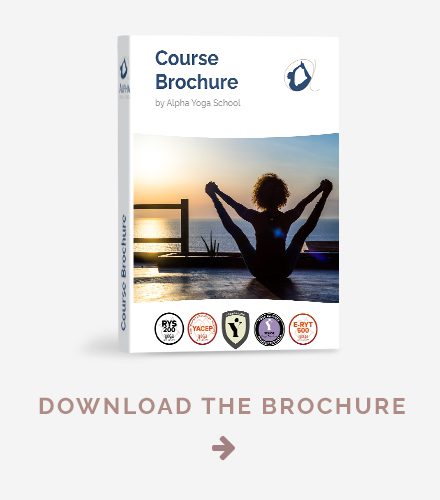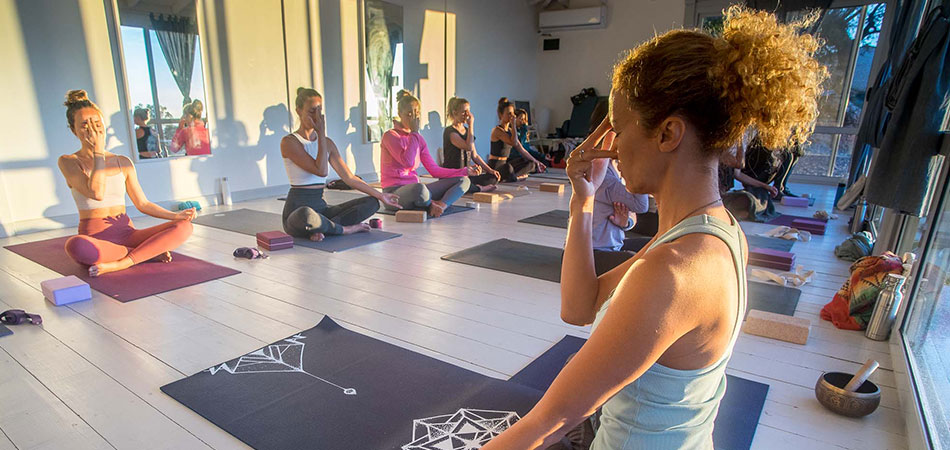
How do you choose the right Yoga Teacher Training for you? And when should you take one?
You know it’s time to take a Yoga Teacher Training if you love yoga, want to improve your practice, are interested in learning more about the philosophy behind it, or want to become a yoga teacher so you can share your passion with others. And no, you don't have to do crazy postures to do your first Yoga Teacher Training.
With all the options out there, choosing the right Yoga Teacher Training for you has now become anything but Zen. So how do you choose the right Yoga Teacher Training for you? Where do you even begin?
The name of these courses is a little deceiving. They are not just designed to train you to become a teacher. They also teach you everything you might want to know about Yoga
You go to Google and start searching. Level one yoga course, foundational yoga program, yoga training for beginners, and so on. All these courses are now called 200-hour yoga teacher training, (YTT) and NO, they are not only for those who want to become yoga teachers as the name may imply.
Now you notice the plethora of styles, locations, formats, and lengths. Do you stay local and take classes on the weekend? Or travel abroad and complete your training in less than a month? Or should you train from home online?
To make the process a little easier, here are a few tips that can help you choose the right Yoga Teacher Training for you. These tips are from our personal experiences and mistakes while choosing over 9 teacher training courses.
The yoga style practiced during the Yoga Teacher Training
A teacher training program should have one or two styles of yoga that you will practice. Make sure that in your teacher training, you will spend time studying and practicing a style that you already know and love. When a yoga school’s website mentions that you will practice 5 styles of yoga, they are just trying to get as many people as possible booked in. Without having a focus, your knowledge base will fall short of stability.
If the school's website doesn't clearly define their predominant style of yoga, be wary and clarify with them first before booking. It’s hard enough to break down one style of yoga in 200 hours, let alone multiple styles of yoga.
Do you know the most important styles of Yoga?
In our 200-hour Yoga Teacher Training, we focus on Ashtanga Vinyasa Yoga and Vinyasa Flow yoga, while our 300-hour Advanced Yoga Teacher Training focuses predominantly on Vinyasa Flow Yoga.
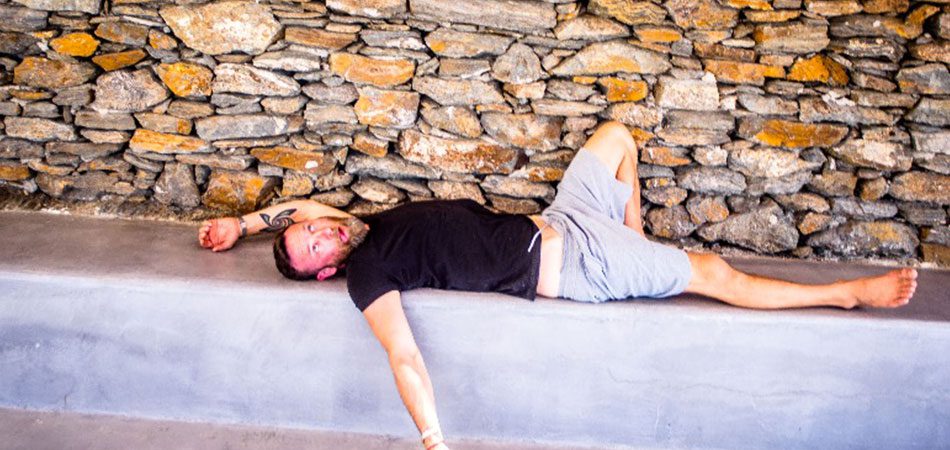
The style of Yoga that you will learn how to teach
A 200-hour yoga program should mention ONE style of yoga that you will learn to teach to others. The asana instructor would teach you step by step how to
- sequence for this style of yoga
- how many types of classes there could be based on this specific style
- a level one class looks like, level two, and so on.
The yoga teacher should apply this theory to practice, which means that the students would have to create their own yoga classes and practice on their fellow students. After they are done teaching, there should be continuous feedback from the teachers and students. Apart from the sequencing, this module should include general info such as teaching skills, class management, verbal cueing, demonstrating techniques, and physical adjustments. On our 200-hour Yoga Teacher Training, we establish a strong foundation in Ashtanga Vinyasa and teach you how to teach Vinyasa Yoga classes.
Alignment classes of the Asanas learned
The training should include Alignment classes. Let’s say a school teaches Vinyasa Yoga. Which poses are found in most of the Vinyasa yoga classes? The alignment of these poses should be explained with
- modifications
- prerequisites
- preparation steps and ways to get to the main goal of asana, etc.
Do you want to know how many yoga poses Martin learned in his first Hatha Yoga teacher training? 12 poses! And of course, this was one of the reasons why he had to take another 200-hour yoga teacher training.
In our 200-hour yoga training, you will learn alignment for 51 poses! Not 12, but 51 poses. The alignment classes are a game-changer on our trainings and always students' favorite module.
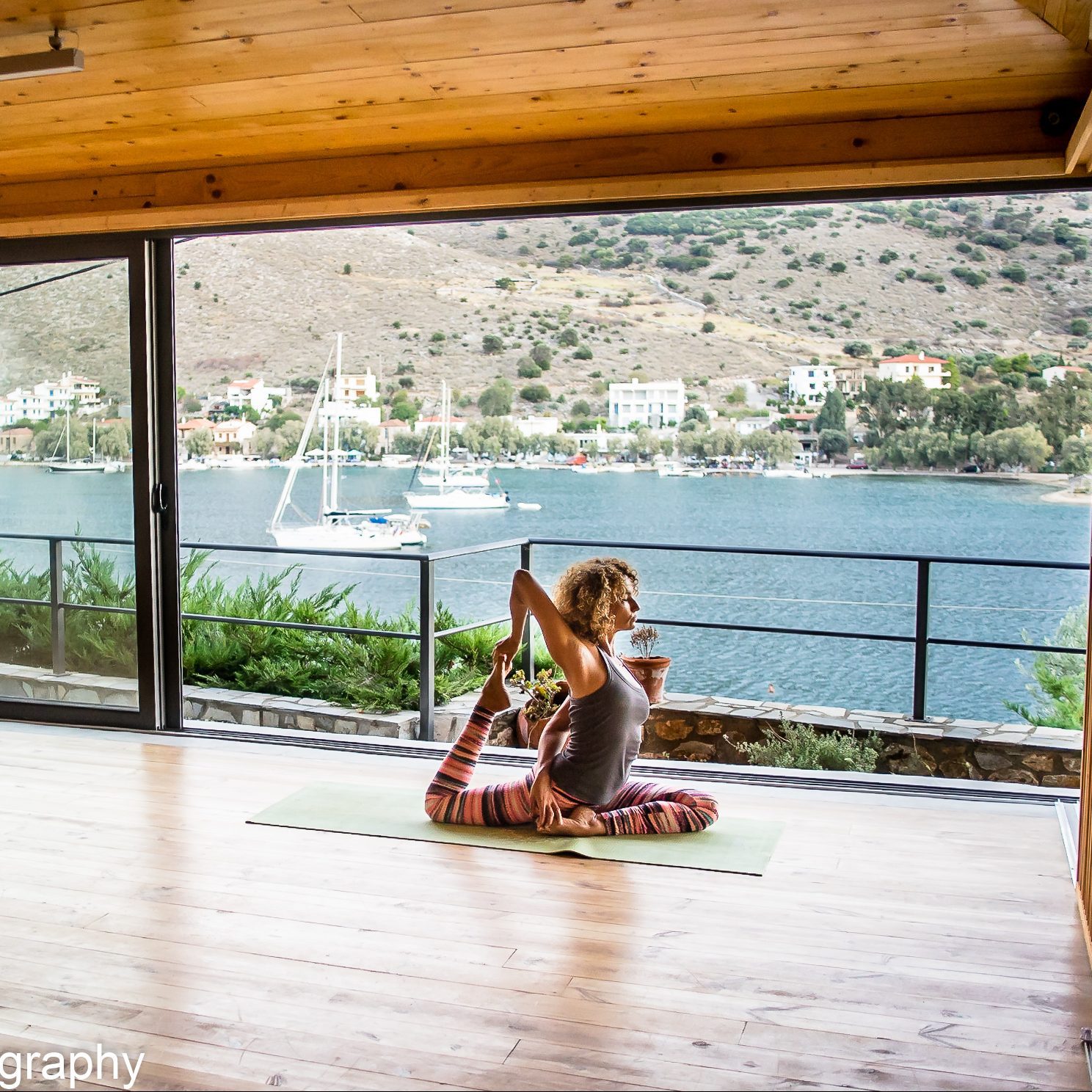
Who will be your Yoga Instructors on your Yoga Teacher Training?
Now that you’ve done some research on the style of yoga you want, it’s time to pick the school. Actually the teachers.
How many instructors will be on the course? Is it a one-man show or is it a group of teachers?
Some schools have over 20 C.V.’s on their website. This can be confusing because you have no idea which teachers you will study with. Find out who will be your teachers. Then, see what their yoga practice is, their teaching experience, and how many teacher training courses they have done.
Read reviews about them. Check out their C.V., and see if it’s possible to take a class with them. And why not request a phone call with them? Follow them on social media, see if you resonate with them - don’t get fooled by the numbers of followers they have.
The number means nothing in terms of their ability to actually teach. It just means that they put a lot of effort into their Instagram account and there is a big distinction between skilled yoga teachers and successful Instagram teachers.
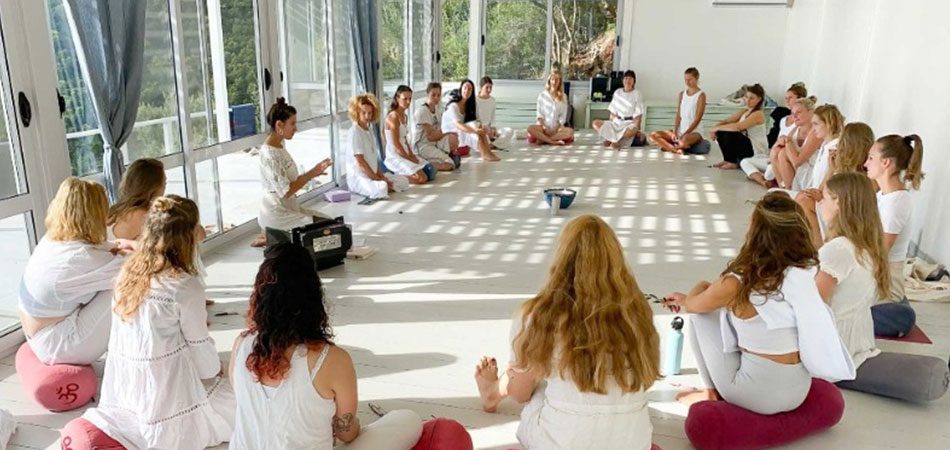
Curriculum / Syllabus of the Yoga Teacher Training
Does the overall syllabus sound ethereal and a bit too poetic to you? An ethereal teacher training mentions “sacred anatomy”, inspirational classes, storytelling, connection, work through life changes, dreams, finding clarity. While these are all lovely activities, they are extracurriculars and not pertinent to a yoga training. Can you really get an idea of what you are going to learn in such training? How will these classes help you in your yoga journey? Especially when your main goal is to become a yoga teacher. ?
A more grounded course mentions classes like alignment, teaching skills, workshops, philosophy, anatomy, sequencing, relaxation techniques and breaks all these modules into details. You can even check out a school’s syllabus on Yoga Alliance, even though some schools don’t have it listed (we wonder why) ?
Objective / Focus of the yoga instructor training
What is the objective of the training? What will you get out of this course? This could be stated as: "By the end of this course, you will deepen your asana practice (the physical practice of yoga), learn about the ancient philosophical roots of yoga and be able to teach Vinyasa yoga to a mixed-level class of students"
Or it can be something like: "By the end of the course, you will learn how to perform cacao ceremony, fire ceremony, transform your life and learn prenatal, acro yoga, kids yoga, hatha yoga, hot yoga and yoga for all."
Your goal could be to take a training that focuses on philosophy, meditation, or anatomy. Do your research and see where you can find exactly that. This may be found on a 200-hour yoga teacher training course, or if not, you could choose to do a shorter course which will give you exactly that. Yoga schools are free to choose what they focus on and this usually depends on the knowledge of the teachers. Yoga Alliance gives schools the minimum hours of each module which will be taught and then it’s up to the school how they fill the rest of the hours. - But we have also seen 200-hour yoga instructor training courses that include 50 hours of Thai massage just because the yoga teacher is also a massage therapist. ? Our school’s focus is on alignment, developing personal practice, and practical teaching skills.

Approved by Yoga Alliance or Not?
Is the training accredited by Yoga Alliance? If it is, this means that the program is following the standards set by Yoga Alliance and upon completion of the course, students can register with Yoga Alliance and be called “200-hr Registered Yoga Teachers”. This is something optional and totally up to the student. Does this mean that you will find clients just by being on this website? No. Will this make you a great teacher? Of course not. Does this mean that one day you can run your own teacher training courses? Yes.
Another benefit is that you get discounts on yoga equipment, yoga insurance, and access to a great video resource library.
Other things to take into consideration are:
Format of the training:
The training can be either over the weekends or in an intensive format. The weekend format is for those who can’t get away for a long period of time. The intensive format is the format where you really feel immersed in the yoga journey, without distractions from work. You will also meet like-minded people and make good friends. Intensive training takes you out of your routine and into a deeper yogic lifestyle.
Location and accommodation:
Is the training around the corner or do you have to fly to get there? If you choose the intensive format, is the accommodation in the same place where the yoga classes take place, or do you have to walk every day to get to your classes and back to your room? Some schools prefer to hide this information so make sure you do your homework.
How much does Yoga Teacher Training Cost?
What is included and what's not included? Costs vary greatly and you get what you pay for. The courses which run over the weekends might allow you to pay as you go, while the intensive courses might have an early bird price or even offer installments. See what’s included and what’s not included in the intensive format training.
We hope this brings some clarifications on how to choose a yoga training and we are happy to answer any questions you might need. Think before deciding which training you want, and then start the research. ?
Much love and light,
Alpha Yoga Team
9 Important Things to Know Before Choosing the right Yoga Teacher Training Course... for you (Point 4 will really surprise you).




